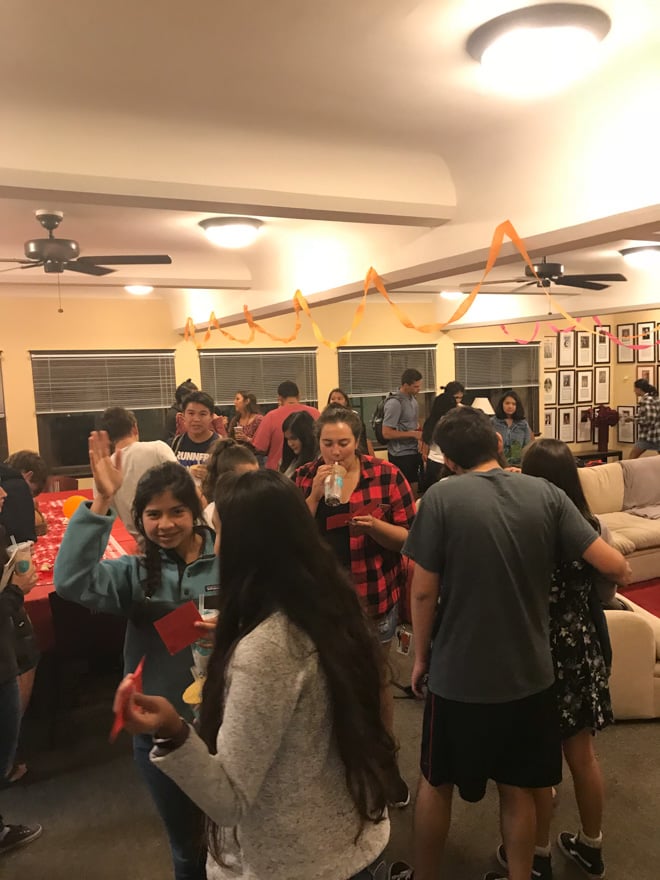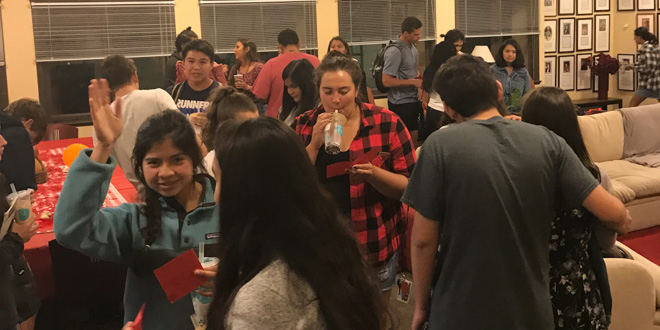Many students who left their families for the Farm have been welcomed into new ones throughout October, thanks to a widespread student group tradition — “sib fams” meant to bring older and younger students together.
Sib programs, in which student groups pair an upperclassman with a freshman in a mentor-mentee relationship, exist in many Stanford communities to help freshmen get accustomed to college life and settle into one of the University’s many smaller communities. They foster inter-class connections and give freshmen an insider’s view of how campus life works, especially in the context of the particular identity around which the sib program is formed.
The most well-known programs are based on culture or ethnicity, but there are also pre-professional, religious and socioeconomic class-based programs as well as pairings in Greek life. Each program assigns pairs by sending out interest forms to freshmen asking students about such information as their major, planned involvement level and what they are looking for in a big. Potential bigs, who are members of the community and typically ex-littles, fill out a similar survey, and pairs are then made by an officer in the program.

This year, the Native American Cultural Center (NACC) focused on making the matching process more personal. Because the Native community is relatively small on campus — there are 67 freshmen in the class of 2021 with indigenous affiliations — the chairs of the sib program were able to get to know many of the freshmen individually.
“We try to match [pairs] very well to the point where it would naturally [be] a friendship,” said Will Paisley ’20, one of the co-chairs of the NACC’s sib program. He hopes that the arrangement will give the freshmen guidance, help and “just someone to be there for you for your Stanford career.”
All sib programs are built around a common identity that binds the community together, whether that be a religion, ethnicity, professional goal or something else. Organizations from the Stanford African Students Association and the Jewish Student Association to the First Generation and/or Low Income Partnership and the Society of Women Engineers all sponsor or have sponsored various programs meant to build a close-knit community around a specific identity.
BROC sib chair Dayonna Tucker ’20 said, “Whatever your black experience is or however you want your black experience to be, [we want you to] feel supported to thrive […] with the guidance of someone who has dealt with being black on campus.”
To make the space of the black community feel like home for its members, she said, “it’s important to build this familiar community.”
The Society for Women Engineers (SWE) focuses on academic programming to help women succeed in their engineering field of choice. Brooke Ferber ’20, the internal mentorship chair for SWE, said that it can be “intimidating to initiate a friendship” with an upperclassman and credits the sib program with “creating access” to other women in STEM. The different events put on by SWE allowed her and her peers to connect with other sib lineages, creating a support system much larger than just a single big.
To reinforce a sense of community, many sib programs sponsor events throughout the year such as ice cream socials, karaoke nights and coffee dates. BROC is looking into tracing sib families back as far back as possible, and the groups tentative plans to host more community-wide events to ensure that sibs stay connected throughout the year.
Even students who weren’t able to be as involved as they had hoped in their sib program said they appreciated the opportunity to meet new people.
Julia Pandolfo ’20 said that the sib program for the Asian American New Student Orientation Committee (AANSOC) allowed her to “explore a new part of [her] identity” and connect with other Asian American students over their shared interests and cultural legacy.
Paisley echoed Pandolfo’s sentiment, saying the NACC program’s goal is to make the native community on campus stronger.
“We share so much within our identity as indigenous peoples, no matter how diverse our different cultures are,” Paisley said.
Contact Eva Hangartner at ehangart ‘at’ stanford.edu.
